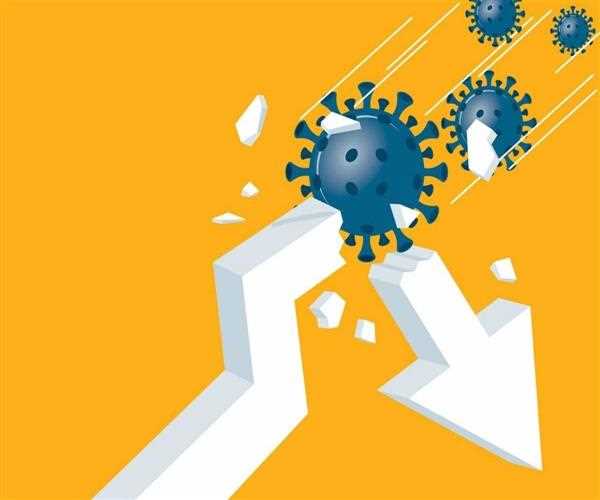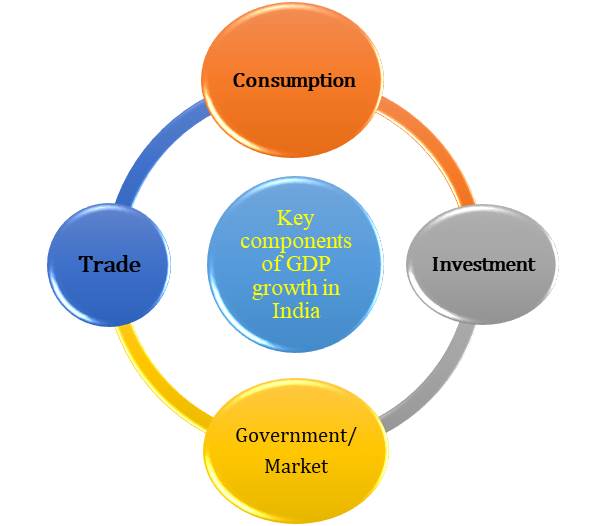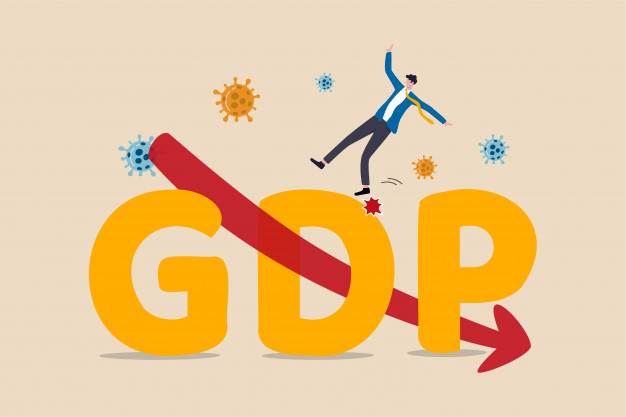
09-Jul-2021 , Updated on 7/9/2021 5:16:33 AM
Getting back on track 'economically'
What is GDP and how does it work? How do we define the money flowing into the economy?
Suppose you work at an office and leave your house early for the same. One of your relatives arrived at your house that day and gave you Rs.500 before leaving. Now you carry that amount with you and leave for your office. Instead of using your savings you give that 500 Rs. to the cab driver. He is likes drinking and goes to the liquor store to purchase some alcohol; he used that money you gave him to buy alcohol of Rs.500. The liquor store owner went to purchase clothes in the evening and bought a shirt for Rs.500.
Did you notice how the money that was initially given to you by the relative has circulated so much that it has generated four times the worth in the economy; Rs.2000. Hence, that Rs.500 has contributed Rs.2000 to the economic GDP of the country. This amount could not have regenerated so much if you had simply deposited it in the bank or at your home. Thus, we conclude that so many economic activities like this are happening in the economy every moment- GDP is the sum of all economic activities in the country over one financial year. One person’s spending is after other person’s income; and the income could be spent again. Therefore, this cycle of Spending and income is supposed to work and add up to the GDP of the country.
What happened to GDP of India since the coronavirus pandemic?
Economies across the world plunged into deep contractions in the April-June quarter of 2020. For India, the fall in real GDP (Gross Domestic Product) in the quarter was the record lowest at 23.9 percent. The Reserve Bank of India (RBI) called it “historic technical recession”.

The contraction continued in the second quarter of 2020 at -7.5 percent. Now in the year 2021, this contraction has turned into the worst hit recession since Liberalisation, in India.
Even before the pandemic, the growth of the country was already shrinking by the decrease in Investment and Consumption (which are the key components of Indian economy). Because of this the exports were affected adversely and in the immediate aftermath of the pandemic their efficacy to boost growth shrunk.
Despite repeated attempts to boost industrial growth & manufacturing, it has not pick up speed. Eventually, lack of demand hit all segments irrespective of their economic nature. The pandemic, as an external shock, has finally contracted the economy.
1) Why aren’t we consuming? - Consumption is one of the very important pillars of the GDP. Ever since the pandemic has hit the nation, consumption has gone down, resulting in slowdown. A depreciation in consumption or purchasing power parity is bound to slow the economy down. The only thing which is helping currently is the retail loans given by the banks. Banks have lent a lot of loans and have regulated many changes in their structure. Still, it has proved to be of minimal help and they are also now in debt. Everything from the basic consumer goods sales, car sales, to the larger aspects like housing sales and FMGC companies have been affected adversely.
2) What to invest if the income is negligible? – Investment sector, like consumption sector, is very important in the economy. But since the pandemic has led to loss of income opportunities, thus, there is no or very little to invest.
3) Government Expenditure- This part of the economy has risen to some percent and led to some help in the economy. For more expenditure by the govt. in there has to be flow of income in the form of taxes.
4) Trade- the value of trade has shrunken as the net exports have fallen down since the pandemic. And due to low consumption, the imports are also shrinking day-by-day.
Solution for the derailed economy:
Bringing the businesses and companies back to work from the adversely hit economy is a challenging task. Also, infrastructure spending is a way to design and construct new infrastructure and give employment to daily wage earners; thus, in turn, adjusting the basic consumption of everyday goods.
Deregulation of rules and regulations is a way to relax the impositions on business and industries; but not a full-fledged deregulation.

Global growth is expected to accelerate to 5.6% this year, largely on the strength in major economies such as the United States and China. COVID-19 is not going to fade away easily and thus, many economies who are not able to catch up will remain struck by adversity for some time; while the other regions of the world will see an upward growth.
Growth among emerging market and developing economies is expected to accelerate to 6% this year, due to increased external demand (exports) and comparatively higher commodity prices. However, many regions of the world are yet not able to uplift themselves due to uneven vaccination, COVID impact or lack of support from the governments.
In my opinion, healthier boundaries have to be made in terms of business and economy. By increasing the purchasing power parity of the people, fulfilling the lack of demand and excess of government expenditure.

Student
I am a content writter !
Solutions
Join Our Newsletter
Subscribe to our newsletter to receive emails about new views posts, releases and updates.
Copyright 2010 - 2026 MindStick Software Pvt. Ltd. All Rights Reserved Privacy Policy | Terms & Conditions | Cookie Policy